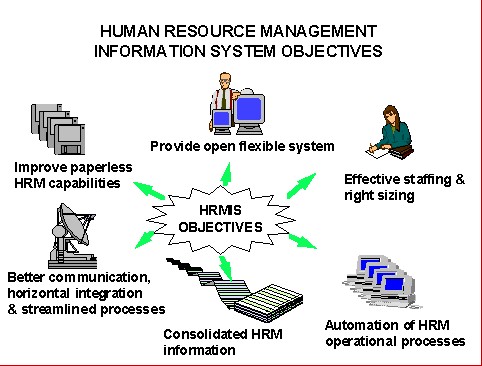For the conclusion, this topic are explain about the using of the HRIS in recruitment and selection, performance management and online induction and how the HRIS using is depend on the organization need. Most of companies HRIS system to manage their business, to replace HR function and for management of company become more systematic. HRIS system are very important to the HR function because HRIS system can make the task easily to complete in the limited time.
Tuesday 20 December 2011
Online Induction System
Every employer recognizes the importance of a proper staff induction program. Apart from having to collect and classify every employee’s work-related personal information, an employer has to fulfill certain legislative obligations, including occupational health and safety issues, to ensure they meet regulatory compliance standards as well as ensuring employee safety. Online Induction methods go a long way to discharging this responsibility, whilst at the same time ensuring that employees assimilate into a new work environment with confidence and knowledge. There are some reasons for developing online staff induction programs, along with some simple explanations of how the process can work in organizational environment. First is poorly planned staff induction program often results in poor employee performance on the job and can also contribute to new employees becoming uncomfortable in their new surroundings, even becoming alienated from the company culture. Second is because of cost-effective online induction program for new employees make it easy to manage and report on the progress of new staff as they acquire the skills they need to do specific jobs or use specific machinery. Although keeping accurate records can be time-consuming, it pays huge dividends when it comes to writing management reports or tracking processes if a safety concern is raised. The other reason for developing online staff induction program is multimedia presentations can be incorporated into the program to make learning not only more effective but more enjoyable as well. In fact, an online trading system can be easily integrated into other automated systems such as payroll and human resource. In high risk industries like construction, or in work sites where contractors regularly move from site to site, tracking the skills of each employee is easier and can prevent inappropriate allocation of responsibilities, especially when it comes to using complex equipment or working in dangerous situations. There also different groups of employees benefit from specifically targeted programs, which is easy to implement in an online induction system. These programs can be delivered in-house by developing your own programs, or by outsourcing course material to experts who can deliver an attractive online experience for your employees and employers can obtain valuable feedback from employees that can help shape future policies and induction programs. This can be done by arranging for outsourcing experts to contact their employees and identify such issues as things that motivate or annoy them and what they like best and least in the program. Online induction programs are easy to implement and, when managed properly, can not only discharge responsibilities as an employer but provide a useful tool for managing valuable human resources, now and in the future.
Reference:
Posted by Misz Katijah at 18:15 0 comments
Recruitment and Selection
Recruitment and selection refers to the chain and sequence of activities pertaining to recruitment and selection of employable candidates and job seekers for an organization. Every enterprise, business, start-up and entrepreneurial firm has some well-defined employment and recruitment policies and hiring procedures. The human resources department of large organizations, businesses, government offices and multilateral organizations are generally vested with the responsibilities of employee recruitment and selection. Recruitment and selection set the stage for other human resources intervention. Before, recruitment and selection process are done manually. But the system of recruitment and selection are built the make the job become easier. If recruitment and selection are done properly, the subsequent movement of the worker through the organizational system is made easier and employee makes a long-term, positive contribution to organizational survival and process. Both recruitment and selection are the two phases of the employment process. The differences between the two are recruitment is the process of searching the candidates for employment and stimulating them to apply for jobs in the organization whereas selection involves the series of steps by which the candidates are screened for choosing the most suitable persons for vacant posts. The basic purpose of recruitment is to create a talent pool of candidates to enable the selection of best candidates for the organization, by attracting more and more employees to apply in the organization whereas the basic purpose of selection process is to choose the right candidate to fill the various positions in the organization. Recruitment also is a positive process i.e. encouraging more and more employees to apply whereas selection is a negative process as it involves rejection of the unsuitable candidates. Recruitment is concerned with tapping the sources of human resources whereas selection is concerned with selecting the most suitable candidate through various interviews and tests. Recruiters need to keep abreast of changes in the labor market to ensure that their recruitment efforts are not wasted or directed at too small a pool of labor. Skill shortages may occur unexpectedly and recruitment and training processes need to be kept flexible. It is a good idea for any organization to plan its labor force requirements, matching available supply against forecast demand. A skills audit of existing staff will increase knowledge of the skills the organization has available and those which are lacking, and thus help pinpoint areas for future development.
Reference:
Douglas H. Reynold, John A, Weiner (2009). Online Recruiting and Selection: In Innovation in Talent Acquisition.
Posted by Misz Katijah at 17:55 0 comments
Performance Management
Performance management refers to how an organization leverages its assets to achieve short-, medium- and long-term strategic goals. Through an approach intended to improve value creation, performance management requires individual to Control cost without sacrificing future growth objectives. The nature of current incentives the challenge is to meet short-term targets while preserving strategic growth initiatives. Individual must Understand what drives cost and profit. Without this understanding, managers are unlikely to allocate resources appropriately and know where to make improvements. At best, it may generate suboptimal results at worst, it could inadvertently and irreparably destroy value. It also improve agility. Organizations that can identify opportunities and threats more easily than their competitors, understand the implications, update strategy quickly and then execute that strategy consistently across the organization will be the winners and also identify and respond to environmental, social and economic risks and opportunities by focus on the lower level line of people, profit drives increased brand value through innovation, improves internal efficiencies and accountability, and engenders the loyalty of consumers, employees and other stakeholders. By using the system, it helps organizations improve performance by focusing on accountability, culture toward measurement and transparency. The system also delivers performance management software and services to help executives to see a clean and simple reality by ensure data quality, transparency and relevance for action. It also helps to manage and align resources (people, money and technology) to strategy. Understand how cost and value flow through the organization and what drives or influences variation. It also improve foresight and optimize value by prove which KPIs drive strategy; forecast and predict future outcomes with accuracy; and optimize resources and activity for maximum value creation. It is help individual to learn, share, codify and adapt. It also help individual understand why things succeed or fail, and update and communicate strategic change quickly and consistently for improved agility and it also evolve through experimentation and innovation by simulate and plan options based on facts, not intuition, and prove which options deliver the best balance of risk and reward. Difference from evaluate the performance using manual; the system performance management is a journey with multiple phases. Many vendors focus on surfacing historical information allowing organizations to see what's happened in the past, and then manage and report on performance. its goes further to help improve, learn and evolve based on facts, not intuition. It is database and is viewed by the analyst community as visionary in performance.management. Particularly when it comes to advanced analytical approaches, strategy management and cost/profitability optimization.
Reference:
Pawan S Budhwar, Arup Varma, Angelo S DeNisi (2008). Performance Management System: A Global Perspective.
Posted by Misz Katijah at 14:54 0 comments
Sunday 16 October 2011
Thursday 13 October 2011
SUMMARY
For the conclusion, this topic are explain about the using of the HRIS in around the world but how the HRIS using is depend on the organization need. Most of companies HRIS system to manage their business, to replace HR function and for management of company become more systematic. HRIS system are very important to the HR function because HRIS system can make the task easily to complete in the limited time. From this topic, now I know the using of HRIS, what is competitive advantages and also component and model of HRIS.
Posted by Misz Katijah at 19:19 0 comments
ON GLOBALISING HRIS
There are three strategies need that drive organizations in selecting each model. First, the need for responsiveness through local differentiation. That means a company who are have many branch all over the world have to give an authority to their branches to make their decision based on their current culture and situation.. Second, the need for efficiency through global integration. Its mean that headquarter of company has authorities to make decision and all the branches must follow it. Then, the last but not least the need for learning through leveraging worldwide innovation and knowledge sharing.
Multinational Model
In my opinion, multinational model is the system that allowing local operations a significant amount of freedom and organizational autonomy. Its mean that the system give the opportunity to companies to customized the system based on their need. For example, Dell.
Global Model
Global Model is use the HQ authority to make all decision making and system to all the branches that they have. The global HRIS is a focus on maximizing efficiency and on building a single standardized,centralized system. Disadvantage of this model is its not responsive to the local needs.
International Model
This model used learning and sharing approach to implementing and managing HRIS by transferring and adapting knowledge and expertise to local organizations while continuing to retain considerable influence and control over the local organizations.
Transnational Model
This model is a combination of three models. It is also have ability to respond effectively and swiftly to the demand brought.
Posted by Misz Katijah at 18:54 0 comments
Subscribe to:
Posts (Atom)

